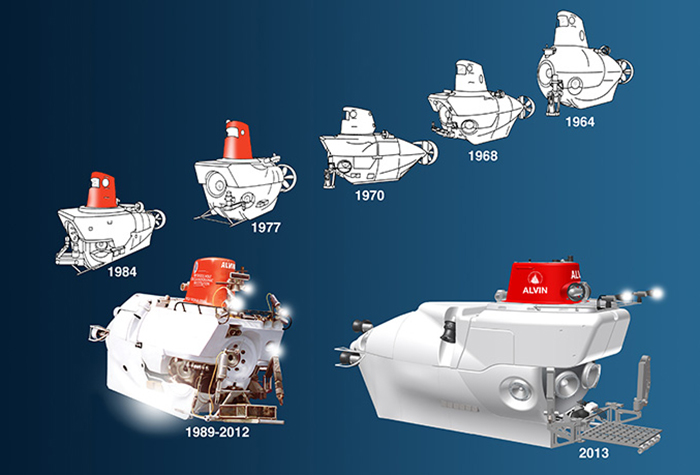
Over fifty years of operation, the deep submergence vehicle Alvin has evolved and changed its look several times (oldest version at the top right, current version at bottom left, and the current conception of Alvin at the bottom right). (Illustration by E. Paul Oberlander, Woods Hole Oceanographic Institution)
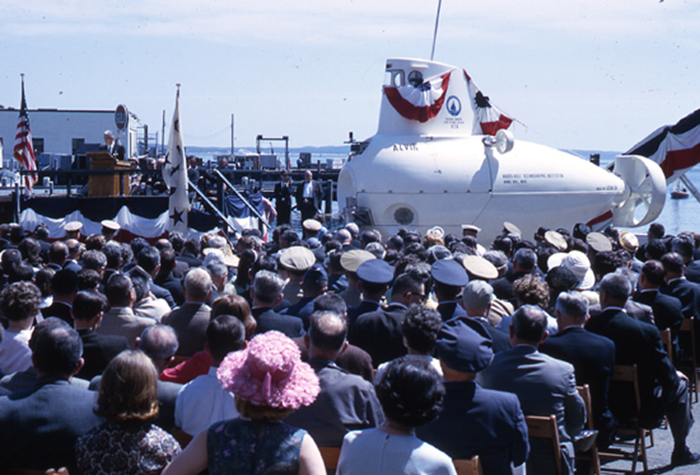
Draped in bunting and with a Navy brass band playing, the new research submersible Alvin was commissioned at the Woods Hole Oceanographic Institution dock on June 5, 1964. (Jan Hahn, Woods Hole Oceanographic Institution)
-
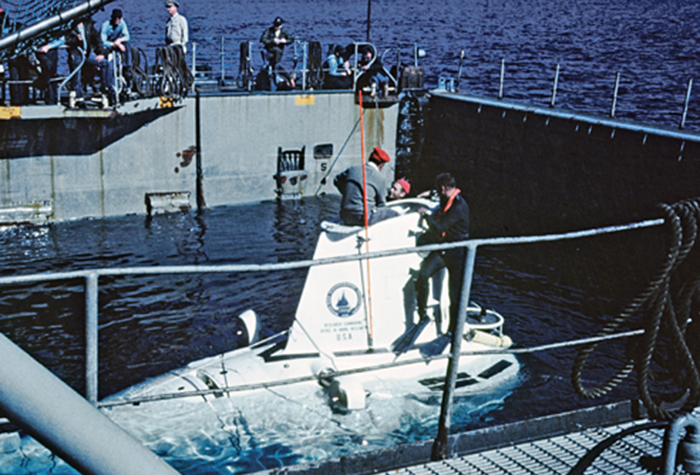
During the search for a U.S. hydrogen bomb lost in the Mediterranean off Spain in 1966, the Human Occupied Vehicle Alvin operated from a Navy dock landing ship. (Photo courtesy of Woods Hole Oceanographic Institution Archives)
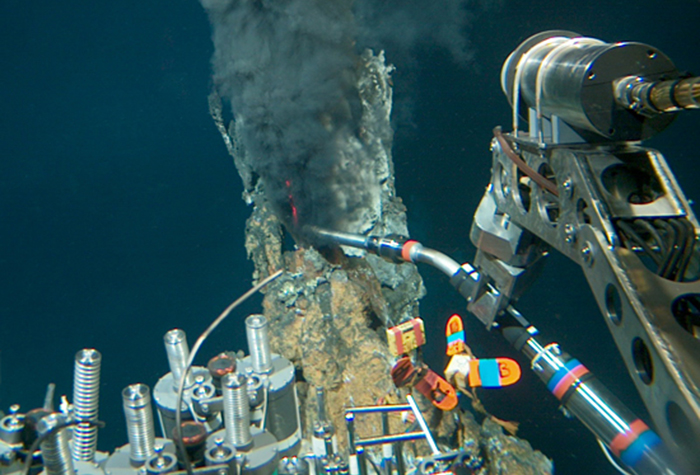
A mechanical arm on the submersible Alvin reaches out for a sample from a "black smoker" hydrothermal vent along the East Pacific Rise. (Photo courtesy of Woods Hole Oceanographic Institution Archives)
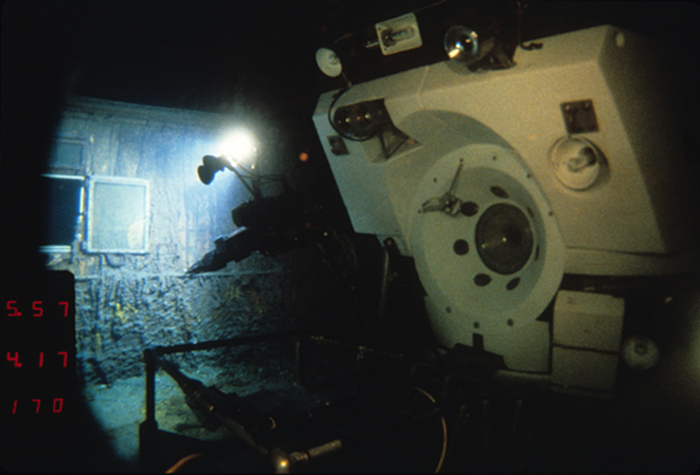
The wreckage of RMS Titanic was discovered on the seafloor in 1985. A year later, a WHOI-led expedition returned with the deep-sea vehicle Alvin and Jason Jr., a prototype robotic vehicle tethered to Alvin via a 60-meter fiber-optic cable and equipped with lights and cameras. (Woods Hole Oceanographic Institution)
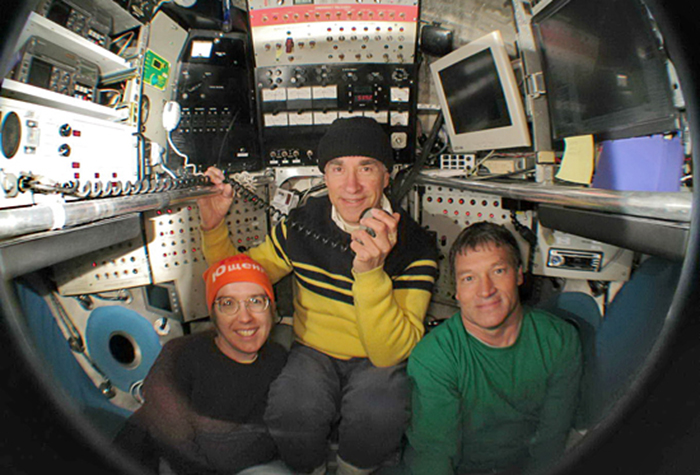
Sweaters and knit hats are typical clothing for scientists and a pilot traveling in the submersible Alvin. Temperatures in the unheated submersible drop as the depth increases, in this case to 1.6 miles depth (2,660 meters) during a September 2007 dive. (Photo by Mark Spear, Woods Hole Oceanographic Insitution)
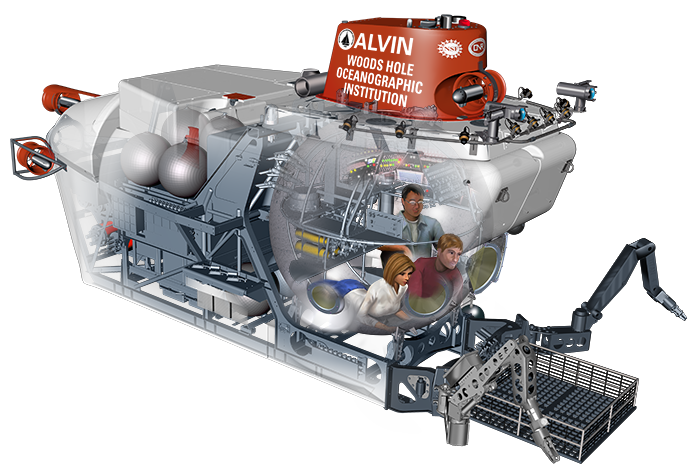
This artist's rendition of the newly upgraded Alvin shows larger the new interior sphere of the sub, which now has five viewports instead of three to improve visibility. (Illustration by Paul Oberlander, Woods Hole Oceanographic Institution)
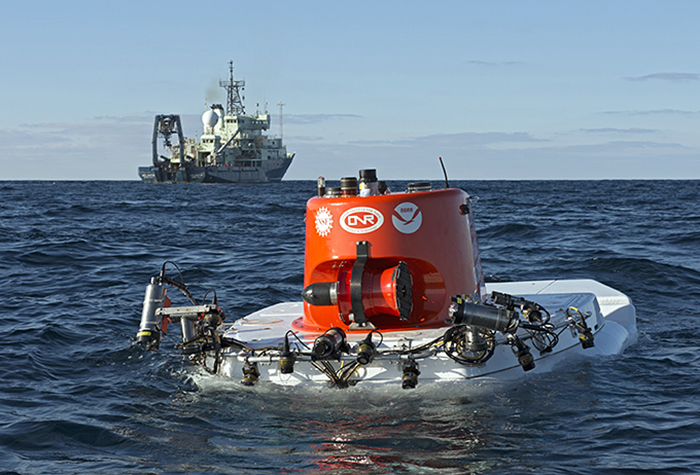
Alvin rests on the surface after a dive to the seafloor as its support ship, R/V Atlantis, stands by to tow it in and bring it back on deck. The dive was part of Alvin’s Science Verification Cruise in early 2014, when the sub was recertified by the U.S. Navy following an extensive upgrade. (Photo by Chris Linder, Woods Hole Oceanographic Institution)
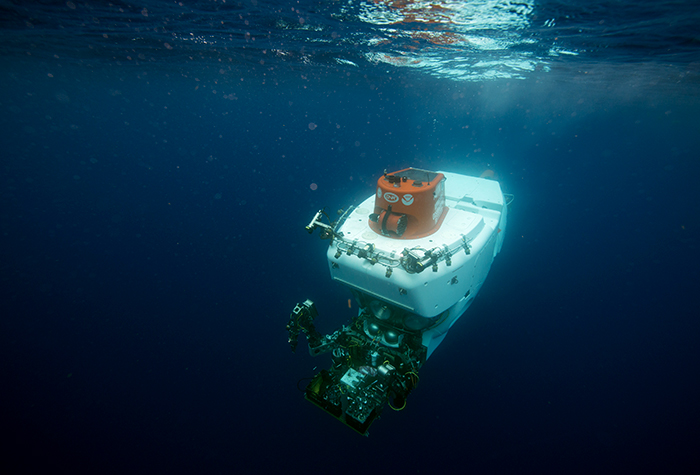
Alvin starts a dive during its Science Verification Cruise in 2014. (Photo by Chris Linder, Woods Hole Oceanographic Institution)